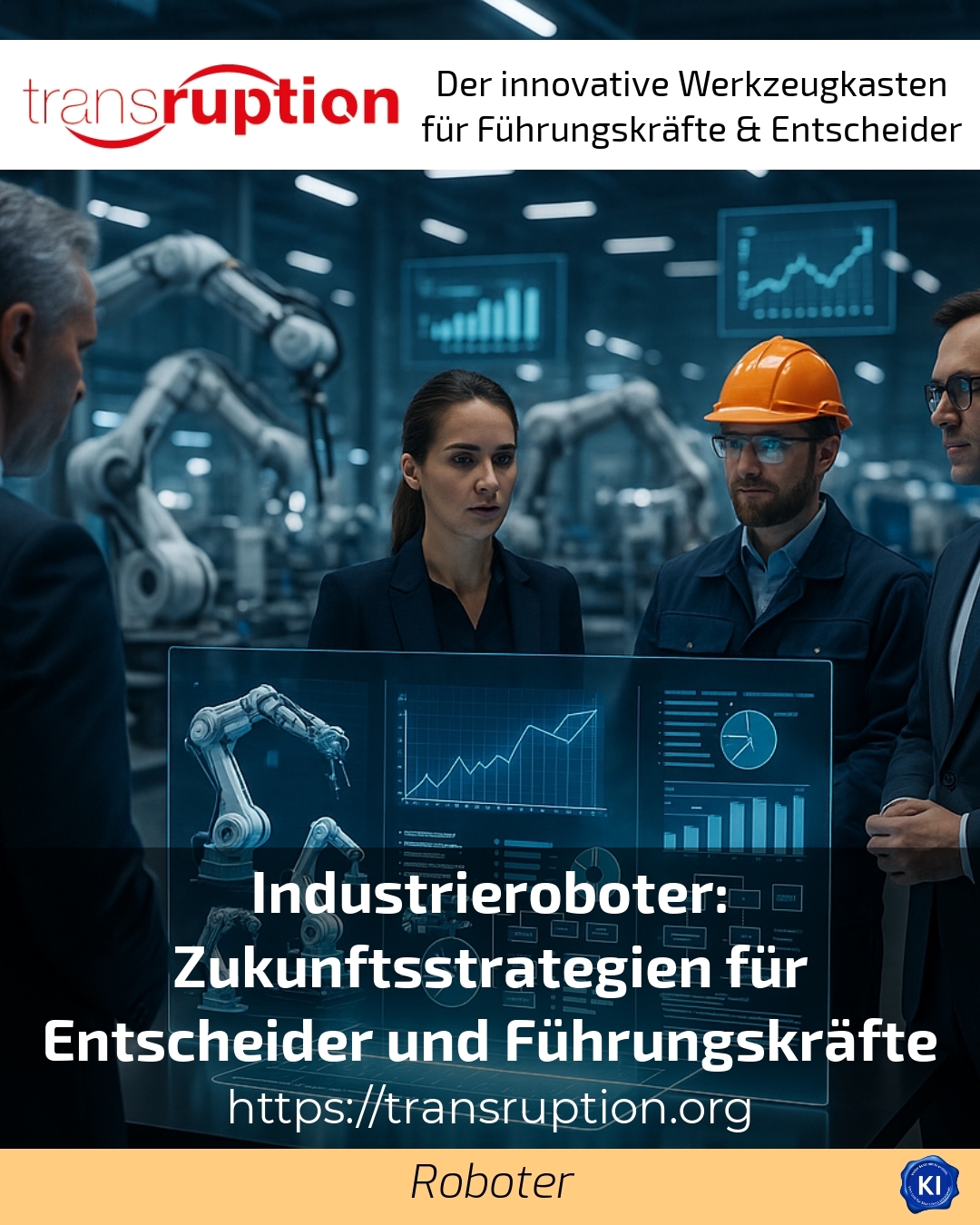Industrial robots enable innovative future strategies for managers
Decision-makers and managers today face exciting challenges and opportunities in the world of industrial robots. The further development in this sector offers a wide range of impulses that can make production processes more sustainable and efficient. With a clear focus on technological trends such as artificial intelligence and smart automation, new fields of application are opening up that have become significantly more important in recent years.
The role of artificial intelligence in industrial robots
Today, artificial intelligence is a key component in the further development of industrial robots. It makes it possible to process large amounts of data from sensor information and implement adaptive behaviours. Companies from sectors such as automotive manufacturing or electronics production are increasingly recognising how AI improves the flexibility and precision of their robots. For example, robots can independently adapt their tasks to changing production orders and optimise quality checks using image processing systems. This increases speed and minimises error rates.
BEST PRACTICE at company XYZ (name changed due to NDA contract) A manufacturing company implemented AI-controlled robots that optimise the material flow in assembly. The robots automatically recognise which components are required and organise the provision without manual intervention. This led to a significant reduction in downtimes and an improvement in throughput times.
Flexibility through smart automation
Smart industrial robots combine robotics, the Internet of Things (IoT) and artificial intelligence for intelligent production. Such systems are particularly in demand in the food industry and in the production of electrical appliances, as they have to react flexibly to different product variants. The use of IoT sensors enables seamless communication between machines and employees. This allows production processes to be adapted to real-time data, which shortens innovation cycles and improves quality assurance.
BEST PRACTICE at ABC (name changed due to NDA contract) A manufacturer of precision components used smart robots that continuously send status data to production management thanks to an IoT network. The rapid response to potential malfunctions led to increased availability of the production lines and better planning of maintenance work.
New fields of application for humanoid robots in industry
Humanoid industrial robots are becoming increasingly important. They are designed to imitate human movements and handling, which makes them particularly attractive for physically demanding or complex tasks. Industries such as the automotive industry are already using them for logistical tasks or assembly aids that supplement human labour. For managers, this presents opportunities to design new work structures, increase efficiency and at the same time reduce the workload on employees.
BEST PRACTICE at DEF (name changed due to NDA contract) In a pilot project, a humanoid robot supported the delivery of assembly kits directly to the production stations in a factory. This significantly reduced in-house material transport and allowed employees to concentrate more on value-adding activities.
Important impulses for decision-makers and managers
Many managers report that the integration of industrial robots with AI and smart systems opens up new perspectives in production. This is not just about efficiency, but also about sustainable and ergonomic work organisation. Experienced coaching can help to develop and implement suitable strategies. It often provides concrete impetus on how automation projects can be approached with realistic goals and a clear focus on value creation.
In the process industry, mechanical engineering and consumer goods manufacturing, such support is more in demand than ever. A balance is often sought there between automation and human expertise. After all, successful implementation requires not only technology but also committed and qualified employees.
My analysis
For decision-makers and managers in industrial management, the key is not to view industrial robots in isolation, but as an integral part of a networked and intelligent production environment. Artificial intelligence and smart technologies offer a wide range of opportunities to make processes more flexible, sustainable and economical. The challenge is to strategically support these developments and develop customised solutions that create added value in the long term. Accompanying impulses and experienced advice can help to find the right balance between technology and people.
Further links from the text above:
[1] Top 5 robotics trends 2025 worldwide
[2] Exploring the Latest Trends in Industrial Robotics for 2025
[4] 5 robotics trends 2025: AI breaks all boundaries
[7] Ready for series production from 2025: Humanoid robots conquer factories
For more information and if you have any questions, please contact Contact us or read more blog posts on the topic TRANSRUPTION here.















